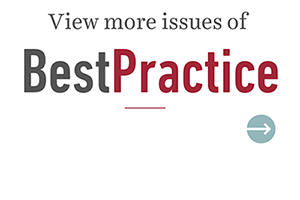Answers to Frequently Asked Questions (FAQs) with David O'Gurek, MD, Associate Professor, Family & Community Medicine, Lewis Katz School of Medicine at Temple University
Opioid Use Disorder has repercussions beyond the walls of each individual practice. Patients with OUD who suffer without proper early medical intervention struggle through a continuous cycle of physical addiction and behavioral and psychological issues. The result is often repeated utilization of high-cost care in the form of ER visits and hospital admissions.
In fact, Temple Care Integrated Network (TCIN) patients diagnosed with OUD are twice as likely to be readmitted to the hospital with a chief complaint of overdose, according to data gathered from all TUH facilities. Furthermore, OUD readmissions at TUH facilities remained consistently higher than readmissions for all causes from 2017 through the first quarter of 2020. Specifically, hospital readmissions of TCIN practices patients with OUD averaged twice that of the TCIN patients with all-cause readmissions.
Why does OUD lead to more utilization of emergency room and inpatient services?
Patients with OUD often experience concomitant physical and mental health conditions that, like their addiction, are affected by social needs that negatively impact their overall health. Previous negative experiences with the healthcare system often lead to delays in care and presentations when more medically complex complications occur, such as endocarditis, forcing patients to present to acute care settings. Furthermore, this fragmented care does not facilitate means to address the complex care needs to reduce barriers and hurdles to achieving recovery.
How can OBOT treatment help reduce utilization?
A medical home that provides a comprehensive approach routed in harm reduction can facilitate an individual’s recovery journey routed in prevention, acute, and chronic care delivery. OBOT treatment reduces overdoses, which can result in costly hospital emergency services and in-patient care. According to the latest Temple data, patients with OUD are 60 percent less likely to overdose if engaged in buprenorphine treatment.
What is the best way to begin my patients with OUD in office-based opioid treatment (OBOT)?
Step 1: You’ve already completed. Your review of this newsletter provides you with some of the foundational knowledge to take steps to integrate treatment for OUD in your practice.
Step 2: Obtain your waiver to prescribe buprenorphine. Learn more about waiver trainings.
Step 3: Build your team and workflows for the initiation of buprenorphine treatment in your office.
Step 4: Review the OBOT guide [PDF] in preparation for troubleshooting and protocols.
Step 5: Just start. You will come to realize the prescribing buprenorphine and its management is one of the easiest things we do in primary care.
Will I see a dramatic increase in patients if I institute an OBOT program?
No. You will simply be providing more evidence-based care to your existing patients. Establishing an OBOT program in your practice does not require you to take on additional patients, and rarely do providers hit their maximum capacity of patients, demonstrating that simply doing this will not suddenly overwhelm your practice.
What resources are available to help my patients with OUD avoid relapse?
TCIN partner physicians are encouraged to join a Philadelphia collaborative and refer patients to Temple’s TRUST clinic. You can also link patients to certified recovery specialist programs and all resources offered by PRO-ACT (Pennsylvania Recovery Organization - Achieving Community Together), including classes that help OUD patients and their families understand addiction. Additionally, work on building a medical neighborhood around addiction, familiarizing yourself with resources in your area to refer your patients. You can utilize local resources like 211 or AuntBertha to address social needs of your patients.
